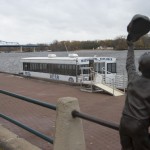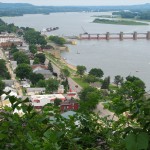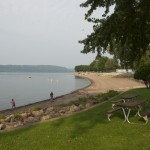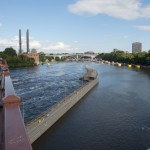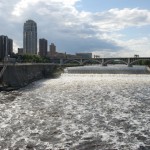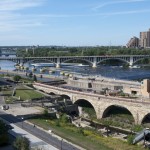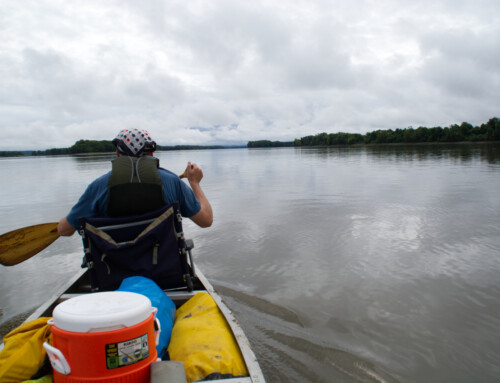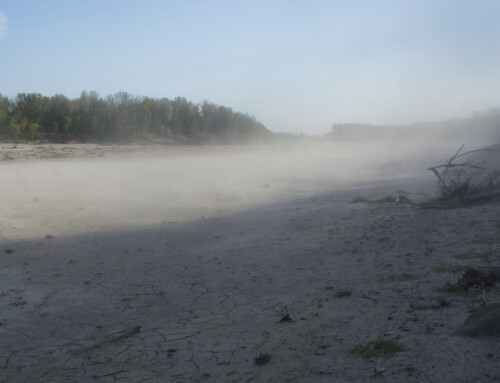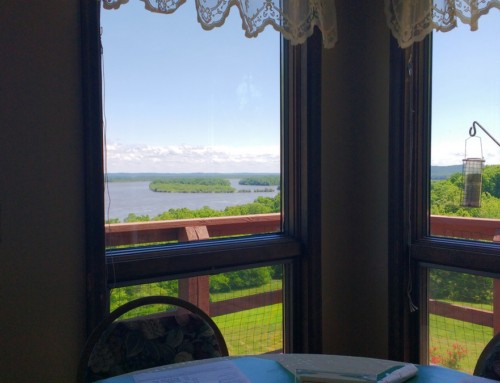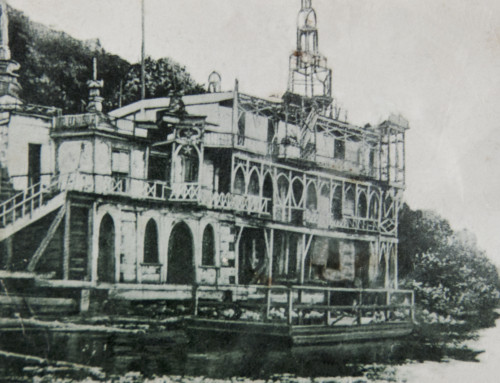I get around. I’ve visited every Mississippi River town from the Headwaters in northern Minnesota to Cape Girardeau, Missouri. One trend that I see is that, after a century of river towns turning their backs on their river, many are slowly pivoting back to their watery roots. But, a few towns are doing it much better than others.
The cities with the most appealing riverfronts have tried a variety of approaches to riverfront redevelopment but they share a few things in common, chiefly that the riverfront is easy to get to and, once you’re there, you have something to do beyond just staring at the river, which isn’t a bad thing to do, it’s just that every river town offers at least that much.
Shop Amazon Devices – Save on Certified Refurb
So enjoy these six riverfronts: take in the pretty views, ruminate on the river, and linger to enjoy the rest of the experience once you’ve arrived.
Central La Crosse has it all: beautiful riverfront spaces that are easy to access, even if you’re walking or biking, a museum, boat rides, and an outdoor space that serves as the city’s front porch. On the east bank, Riverside Park hosts most of the city’s summer festivals and is the de facto place to hang when the weather is cooperative, which is more often than you might think. On the other bank of the river, Pettibone Park has a public beach, campgrounds, and plenty of places to picnic, fish, or laze next to the river. Even though some of these spaces flood periodically, they are well-maintained and have not been segregated from the rest of the city by a concrete wall or high levee. If the river was more accessible throughout the rest of the city, La Crosse would rank higher than #6.
5 (tie). Bellevue and Guttenberg (Iowa)
The riverfronts in these two small communities are very similar: paved paths along a riverfront lined with well-tended green space from one end of town to the other, no railroad tracks next to the parks (a rarity along the Mississippi), a place to watch boats passing through a lock, and easy access to a modest downtown area, which still faces the river. You know that these towns are doing something right, because there are always people walking and biking along the riverfront paths.
3. Lake City (Minnesota)
Located along Lake Pepin, a natural lake in the river’s main channel, Lake City makes the list for the pure physical beauty of the riverfront, almost all of which is accessible to the public through parks and walking/biking paths. In the summer, the farmers market is near the shoreline, sailboats dot the horizon, and public cruises take people on the river to experience it firsthand. The only downside is that portions of the riverfront are cut off from the town by a major highway that can be intimidating to cross.
2. Davenport (Iowa)
Throughout the Quad Cities, former industrial properties have been converted to impressive public parks. Paved multi-use trails line the river on both sides and are popular for biking, running, and walking. While the entire region deserves praise for creating great spaces along the river, Davenport does it better than the rest. From Credit Island at the west end to the Bettendorf city line, a series of parks follow the river and invite a slow stroll or a vigorous bike ride. In summer, thousands of people gather on the riverfront for festivals, including the Beiderbecke Jazz Festival. The riverfront is easily reached from downtown, either by taking the funky skybridge (which, frankly, looks better at night) or by crossing River Drive, which isn’t usually that busy. Within an easy stroll of the riverfront parks are museums, a casino, restaurants, bars, a farmers market, and one of the most scenic baseball stadiums in the country. The city has resisted efforts to hide the downtown area behind a flood wall or levee, ensuring that the city’s connection to the river remains palpable, through good times and bad. Moline (Illinois) has similar strengths, but the newer developments along the river near downtown break up the continuity and have cut off river access in places.
1. Minneapolis (Minnesota)
With paved multi-use paths next to the river, a historic railroad bridge converted to pedestrian use that connects two vibrant parts of the city, and limited development along the river throughout the city, the Minneapolis riverfront is a stellar place that you’ll find hard to leave. Walk along the river any time of day in the summer, and you’ll see hundreds of people enjoying the riverfront spaces. The Mississippi is easy to reach from downtown; you can walk or bike easily, at least with no more difficulty than crossing any other downtown street.
The riverfront experience is rich in diversions. Foremost is that there are many places to appreciate the sheer beauty of the river, as well as the degree to which we have engineered its flow. You can marvel at the height of the Upper St. Anthony Falls lock (49 feet), while questioning the wisdom of building it in the first place. The riverfront is lined with trails that run the length of the river on both sides and the downtown area has a high concentration of museums, cafés, public art, buzz-generating architecture, and a large university. If only the new Guthrie Theater wasn’t such a downer. Yea, I know it’s been nearly universally praised, and while I love the interior spaces, I think the exterior is sterile and uninspiring and does little to enhance the beauty of the riverfront itself. But who the hell am I, anyway?
Honorable mention: St. Cloud (Minnesota) has several nice riverfront parks and is expanding a trail network along the river; these improvements could nudge La Crosse out of the top six in a few years.
In the next blog, I’ll tell you about five cities with Mississippi riverfront spaces that need a lot of help.
- River boats dock at the La Crosse riverfront
- Bellevue, Iowa
- Lake City, Minnesota
- Minneapolis, Minnesota from the Stone Arch Bridge
- St. Anthony Falls; Minneapolis, Minnesota
- Minneapolis, Minnesota
© Dean Klinkenberg, 2011
